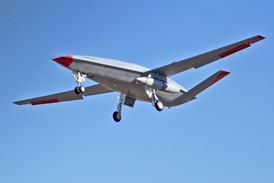Need for much lower-cost air transport and slowdown in small regional jet sales set to boost the market
Bombardier and Saab both claim to be seeing a renewed interest in regional turboprops fuelled by the need for much lower-cost air transport on niche lower-yield and short-haul routes. The large-scale retirement of older 19- to 30-seat aircraft and slowdown in sales of small regional jets is helping.
"There has been a big pendulum swing towards jets and now what we're seeing is perhaps that swing went too far and too quickly," says Steve Ridolphi, Bombardier Regional Aircraft president. The Canadian manufacturer sees an emerging market for the Dash 8 Q400 in the form of regional equivalents to the low- cost carriers that are gaining increasing market share at the expense of the loss-making mainline airlines.
"We are now going for something different. We are looking at carriers which, like Southwest, are going to capture car and bus traffic, and doing it with the Q400 because - thanks to its technology - it is the only one that can deliver to this low CASM [cost per available seat mile]," says Ridolphi. Bombardier points to the recent sale of 17 Q400s to FlyBe and the localised success of Horizon's 70-seater turboprop fleet in competition with Southwest Airlines.
Based on an average 370km (200nm) sector with 50 passengers and a $55 fare, Bombardier estimates the CASM of the Q400 is around 11.57¢ versus 17.64¢ for a regional carrier-operated CRJ200 and 12.90¢ for a low-cost carrier-run Boeing 737-700. Margin on this sector, it estimates, would be around 26% for both the CRJ and Q400, against -61% for the 737, while break-even load for the Q400 is estimated at 37 passengers compared with 81 for a low-cost carrier 737.
Figures released by Saab show a slowdown in the contraction of the turboprop market, with only a 7% drop in the number of 50-seater or smaller scheduled daily departures over the past year, compared with 30% since 2000.
At the same time, says Michael Magnusson, Saab Aircraft leasing chief executive, the introduction of much smaller numbers of 30-seat regional jets has "peaked" with a shift to more efficient 50-seat jets leaving a continuing need for lower-cost turboprops.
The reduction in turboprops has mainly hit 19- to 30-seat Raytheon 1900s, BAE Jetstream 31/41s, Embraer EMB-120 Brasilias and Fokker 50s, which are either too small or uneconomic to support, and has been more acute in the USA than Europe.
Source: Flight International
















